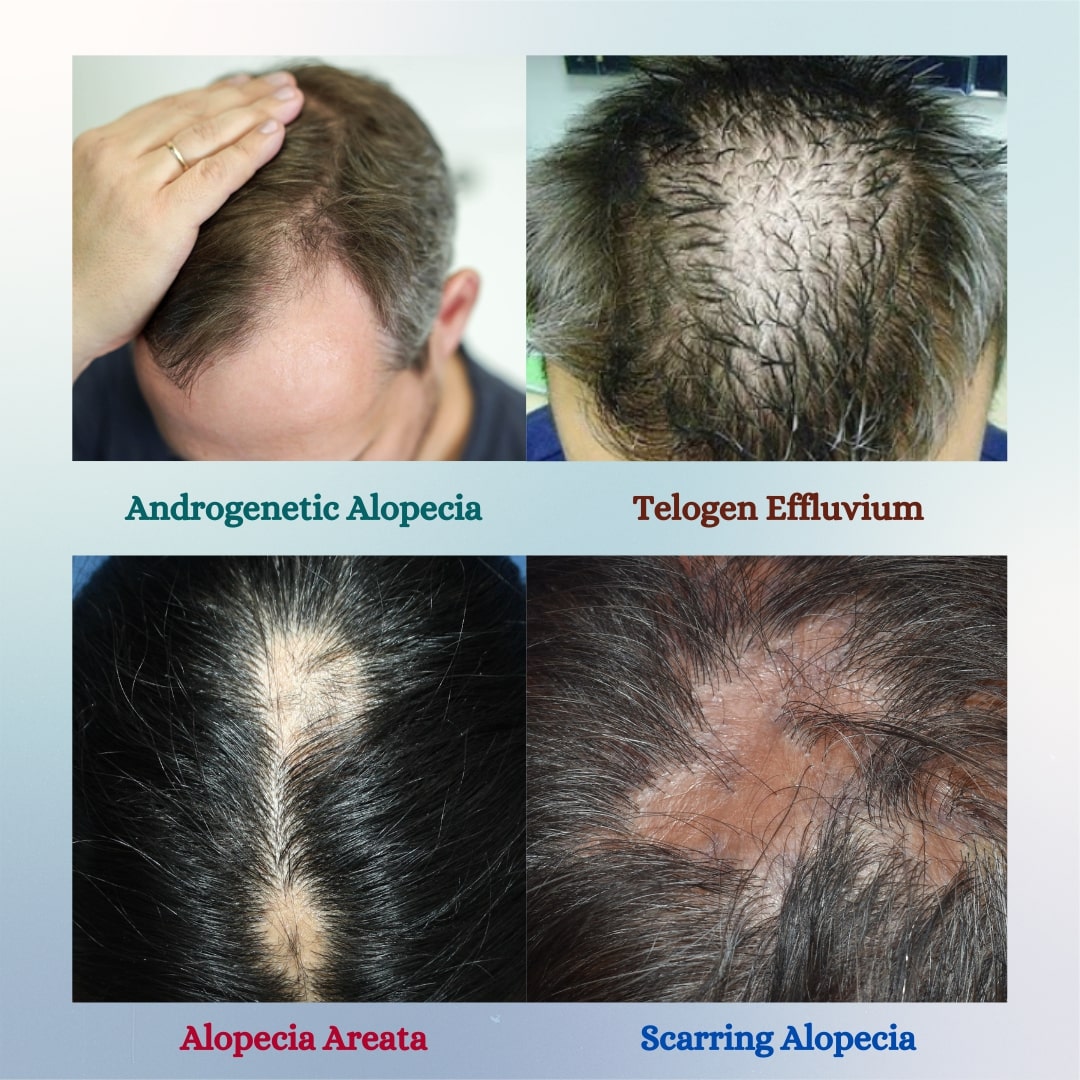When it’s intended to restore the original looks via Hair Transplant, there is no room for age factors to play the part. As patience is in short supply when a determined individual seeks to conquer anxiety, boost self-esteem, and regain lost confidence by attaining a full head of hair.
Still, choosing the right age for hair transplant is a curious question people want to know.
Well there is no minimum or maximum age criteria to go for hair transplant. But still, some factors warrant careful consideration before embarking on the decision.
This article dive into these factors to provide clarity on the ideal age to opt for a hair transplant.
We encourage you to stay tuned until the conclusion for a thorough exploration.
At Which Age Does the Hair Start Shedding?
Hair shedding is not confined to a specific age; it can commence at any stage of life, irrespective of your age. Also, the reason behind it may also differ.
Various forms of hair shedding includes:
Androgenetic Alopecia: Hair strands gradually start thinning, leading to a receding hairline and eventual baldness.
Telogen Effluvium: Existing hair completes its life cycle, paving the way for new hair growth.
Alopecia Areata: Sudden hair loss initiates with one or more circular bald patches.
Scarring Alopecia: Inflammatory conditions result in scarring, destroying hair follicles and causing permanent hair loss.
Amongst these, “Androgenetic Alopecia” stands as a primary reason prompting individuals to consider Hair Transplant Surgery. But “When should you go for a Hair Transplant”? The answer lies ahead.
Best Age For Hair Transplant
While it’s true that there’s no specific age requirement for a hair transplant, it’s generally advised to refrain from the procedure in individuals aged up to 20 Years.
It’s recommended to wait an additional 2-4 years until hair loss stabilizes and not go for it in the very beginning.
But nowadays, childrens as young as 17-19 years old are also facing major Hair loss due to factors such as academic stress, career pressures, nutritional deficiencies, or genetic predisposition. They start experiencing a higher grade of baldness at this age only. Consequently, their attention shifts from studies to hair care.
In situations where young individuals are facing partial baldness, societal expectations may discourage them from freely socializing in public spaces like events, birthday parties, taking pictures and then finally hurting their self image. And this is the crucial timing when their confidence starts building. So in that case, their demand for Hair Transplant is quite Genuine.
Note: Hair Transplant at a young age has no issues with safety. Its unverified risk has no relation with age. As long as you are physically fit and free from any existing health conditions, a hair transplant can be safely performed.
Technical Considerations Before Opting for Hair Transplantation at a Young Age
When you go for a hair transplant at a young age or even at the age of 60 years, the expectations for both will be different. A younger individual, aged 20 to 25, typically seeks high density, extensive coverage, and a lower hairline.
The only challenge here is, the availability of supply! As when you create a lower hairline, the requirement for a donor hair follicle is more.
It’s crucial to recognize that creating a lower hairline in a young individual undergoing a hair transplant may pose challenges in the future. As the person ages, there remains a risk of progressing to an advanced stage of baldness, particularly if the hair loss is attributed to androgenetic alopecia. Subsequent hair loss may occur in future, potentially affecting the crown or mid-scalp region, necessitating the need for another hair transplant.
Now, if you have already invested all the donor hair follicles while creating lower hairline in previous hair transplant, then there will be shortage of donor hair follicle to fill up the advanced grade of baldness in future.
That’s why at a younger age, high density expected lower hairline is avoided.
In contrast, an older person, aged 50 and above, might find satisfaction with a higher hairline and relatively lower density.
Hair Transplant Alternatives for Young Age Individuals
- They are advised to intake quite normal medicines, such as food supplements, multivitamins to help stop hair loss to a great extent.
- The use of minoxidil is suggested, which widens blood vessels, enhancing the delivery of essential nutrients to the scalp.
- Platelet-rich-plasma (PRP) therapies involve injecting growth factors directly into the scalp, presenting an additional approach for managing hair loss.
- They are advised to improve their hair as well as their lifestyle.
- They are asked to wait 2-4 years while taking these supplements.
But nowadays, even youngsters of age group 17-19 are also seen with grades 5-6 of baldness. So, then the surgeons are expected to do a hair transplant to regain childrens lost confidence.
While this is typically avoided, grade 5-6 of baldness does not serve as a contraindication, allowing for consideration of the procedure.
Important Insight for Individuals Opting for Hair Transplants in Their Early Years
- After their Hair Transplant, they need to take a complementary treatment which includes oral medicines, minoxidil and DHT blocker finasteride. Otherwise,the male pattern baldness will resume. This is done to preserve the existing hair as long as possible.
- Hair transplant at an early age may not be a one-time solution for youngsters. Given their young age, repetition of the transplant may be required in the middle and crown area of the scalp which is attributed to androgenetic alopecia.
These are the major reasons why hair transplant is not advised at a younger age.
Bringing It All Together
Keeping in mind the age, degree of baldness, donor area, psychological aspects, stability, and patient’s understanding of the disease can help surgeons make informed decisions. It is very crucial to know the importance of medicines. Also, it’s essential for younger individuals to understand that creating a lower hairline at a young age may compromise future options for the donor area.
Finally the right decision should be mutual among the youngsters, their parents and surgeon for a successful hair transplant. If we talk about older age, then when should it be done? Answer to this question is similar. A prior counseling is needed where medical checkup of any disease is recommended so it doesn’t become problematic while hair transplant. If a senior citizen is considering a hair transplant, it’s essential to undergo tests and investigations for conditions like heart problems, renal issues, and diabetes. A pre-anesthetic checkup, along with a fitness assessment by a physician, ensures that the individual is fit and healthy for the procedure.



